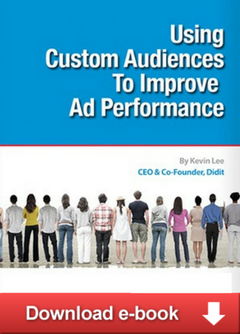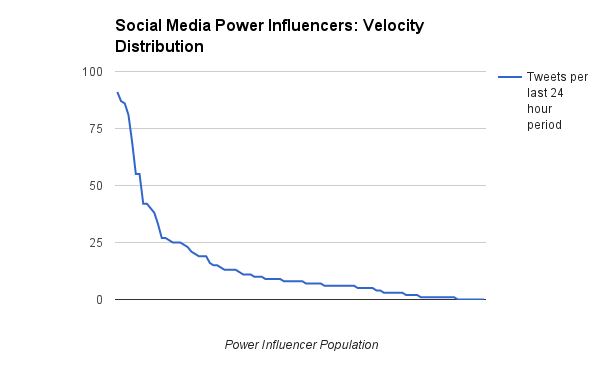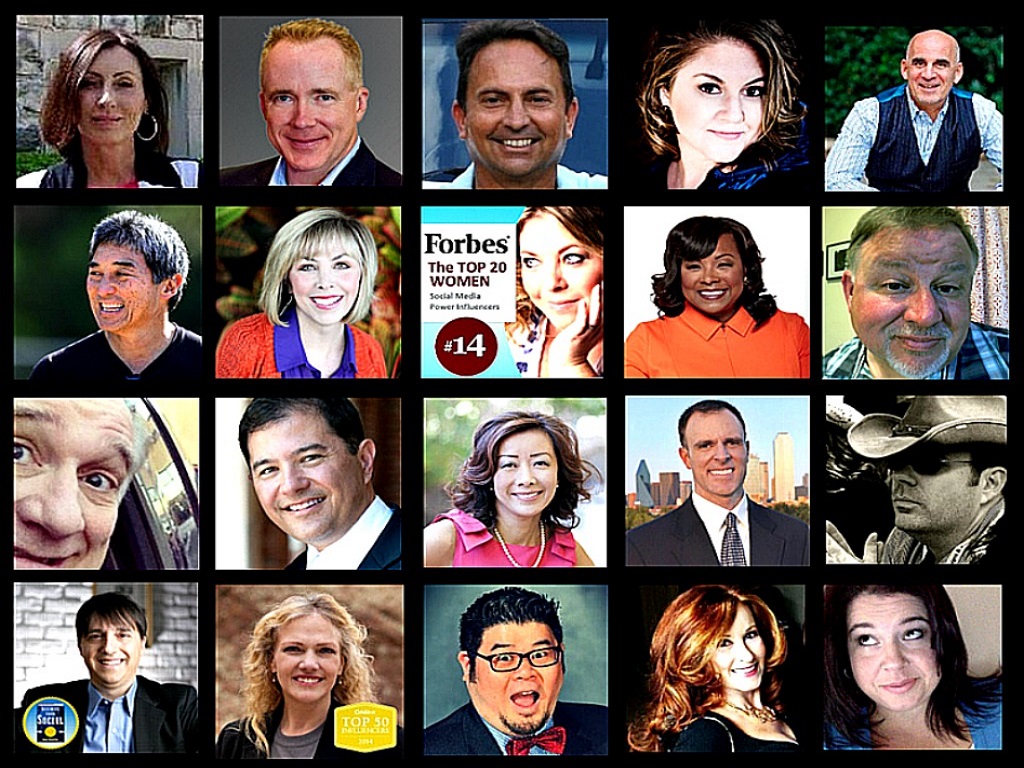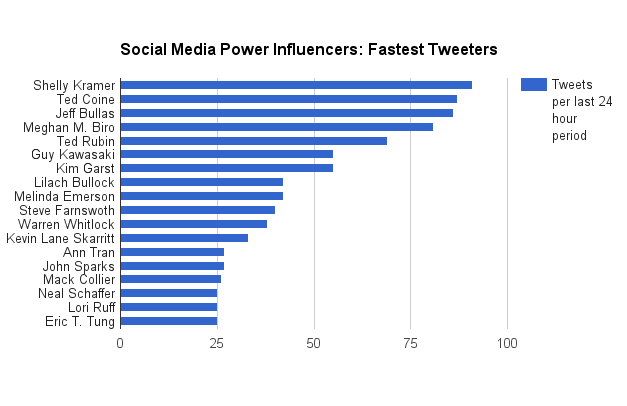April 30, 2015: Social media power influencers are the A-team of the social media crowd. These enormously talented professionals have completely mastered the social media milieu, colonized vast tracts of the world’s social consciousness, and continue to expand their spheres of persona-driven power with every tweet they transmit.
Consequently, these high social achievers are an excellent focus group from which social media best practices may be extracted and examined. And so today — in our second study major of social media’s smartest, most powerful set (our first evaluated their mobile-friendliness), Didit studies how often they Tweet. This answer is important, because these people are Grade A experts who understand a thing or two about how to use Tweets to stimulate engagement.
Methodology
 Didit sampled the Tweet output of a select group of 100 Social Media Power Influencers to determine the number of Tweets they transmitted to their online audiences in a single 24-hour period. Our source list was the official roster of Social Media Power Influencers curated by StatSocial.com. The total tally within this one-day period is the “Tweet Velocity” score for each Power Influencer.
Didit sampled the Tweet output of a select group of 100 Social Media Power Influencers to determine the number of Tweets they transmitted to their online audiences in a single 24-hour period. Our source list was the official roster of Social Media Power Influencers curated by StatSocial.com. The total tally within this one-day period is the “Tweet Velocity” score for each Power Influencer.
This sampling was begun and concluded on April 25, 2015. Both original tweets (unique content crafted by the Power Influencer) and Retweets (non-original tweets simply forwarded, with or without comments, by the Power Influencer), were included in the raw Tweet count.
No effort was made to parse, decode, or subjectively evaluate the content of any given Tweet or Retweet or evaluate its merit or audience relevancy. The assumption behind this study that the content of each Power Influencer’s Tweets and/or Retweets is equally meritorious and audience-relevant, given their preexisting membership in the Power Influencers category (which naturally does not afford admission to individuals with nothing meaningful to say).
Results
Tweet Velocity rates differed markedly among Social Media Power Influencers. The largest number of Tweets observed in a 24-hour period was 90, transmitted by Shelly Kramer. The average Tweet velocity for the entire group was 14.5 (figure TK); its median for the group was 7.5. Some Power Influencers did not transmit any Tweets in the sampled 24-hour period.
Along with many forms of natural, geophysical, and actuarial phenomena, Tweet velocity among Social Media Power Influencers follows a rough power law, or “Long Tail” distribution curve (figure 2). The top 20 high-velocity Power Influencers accounted for a disproportionately large 63.2 share of total Tweets served in the 24-hour time window. (figure 3).

Figure 2: Social Media Power Influencers: Tweet Velocity Distribution across sample set.

Figure 3: Social Media Power Influencers: Share of Total Tweets attributed to High-Velocity Tweeters in a single 24-hour period.
Analysis
Many have observed that the velocity of communications isn’t the only factor determining the success or failure of a given effort to communicate. Obviously, the content of such communications (for example, the words, images, hyperlinks and/or emotive symbolic elements) is important as well.
But there have been multiple studies validating the proposition that content transmission periodicity has a positive correlative influence on online popularity. For example marketing automation vendor Hubspot notes that business sites with more pages receive more gross leads than do those with fewer pages. According to consultancy firm i-scoop, “the more you blog, the more visitors you have, it’s that simple.” Additionally, multiple anecdotal reports support the notion that “more is better” on social media (although how much better is anybody’s guess).
There is no known reason that the “more is better” rule should not apply directly to behavior on social networks such as Facebook, Twitter, LinkedIn, etc. Quantity matters — as much and perhaps more so than quality. Realizing this, social networks do not apply any economic disincentive toward posting enormous volumes of material, making high-velocity social messaging a low-risk, high-reward endeavor.
While “more is better,” the relationship between Tweet Velocity and social rank is more difficult to establish. Didit did not detect any over correlation between Tweet Velocity and Social Status among the Power Influencers we studied(figure 4). This may have been due to the extremely short time window in our study; only by factoring in historical Tweet volume may it be possible to reach a more satisfying answer.
Discussion
Several interesting insights were surfaced by our sample. One interesting finding relates to Guy Kawasaki, who is widely reputed to be the most prolific Tweeter in human history. However it is clear from our data Mr. Kawasaki(with 55 daily Tweets) doesn’t Tweet that often when compared to our “hyper-velocity Tweeter such as Ms. Shelly Kramer (91 daily Tweets), Mr. Ted Coine (87), Ms. Meghan M. Brio (81), and Mr. Ted Rubin (69), each of whom communicates much more frequently than Mr. Kawasaki (Figure 5). While it is impossible to say, given the narrow time window of this sample, whether Mr. Kawasaki simply “took the pedal from the medal” for the particular day in which the sample occurred, only periodic resamplings are likely to assure his information-hungry fans that he is not on the verge of slowing down.
While one of our researchers hypothesized that Tweet Velocity would likely be higher in individuals residing in U.S. states noted for their “fast-talking” population (e.g. California and New York), Tweet Velocity appears to be completely independent of geography. The 20 highest-velocity Tweeters were distributed among a variety of U.S. states, including Alabama, California, the District of Columbia, Florida, Illinois, Massachusetts, Minnesota, Missouri, Nevada New York, and Texas.
Nor does gender appear to be significant statistical factor in rapid Tweeting behavior; of the 20 high-velocity Tweeters, ten were men and eight were women, a ratio which, although departing somewhat from the U.S. National Sex Ratio of 1.05, isn’t terribly far from it. Age, unfortunately, could not be measured as a demographic influence on rapid Tweeting (Social Media Power Influencers do not routinely disclose their age anywhere on their social media feeds).
A final question from our researchers (“if they Tweet this quickly, when do the Power Influencers have time to get any client work done?”) could not be answered by our data. It is possible that some Power Influencers do not actually Tweet continuously around the clock, relying instead on social media platform publishing management tools such as HootSuite to “batch” their entries for automatic distribution later. This could explain why they are able to function uninterrupted for so many contiguous minutes during important keynote addresses, client presentations, etc.
- 10 Mistakes to Avoid When Using QR Codes for Marketing - September 20, 2023
- Kevin Lee on How AI Changes the SEO Landscape - August 31, 2023
- The Power of Compound Marketing: Kevin Lee Presents @ 1MediaWorld 2023 Global Conference - March 7, 2023




